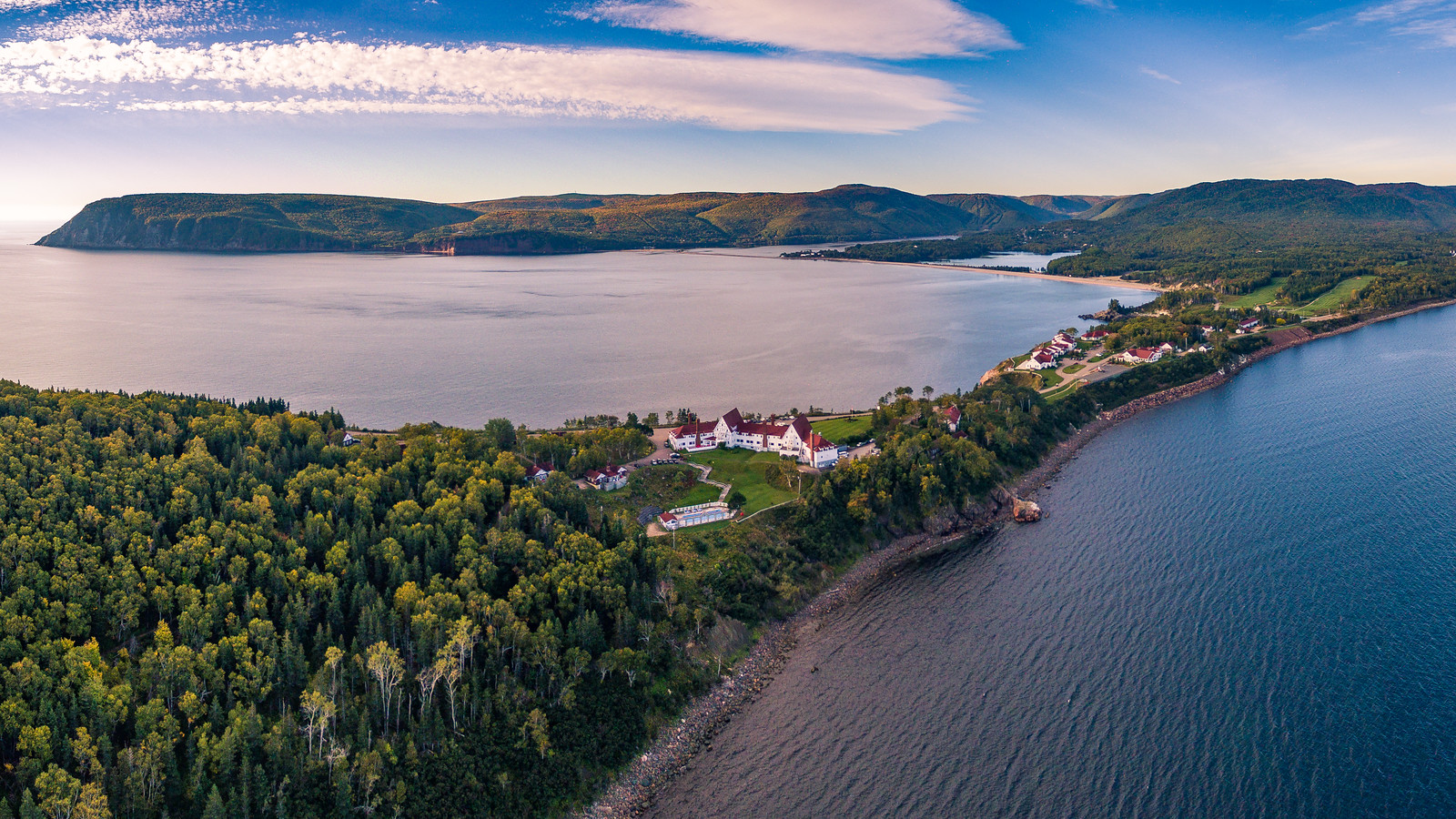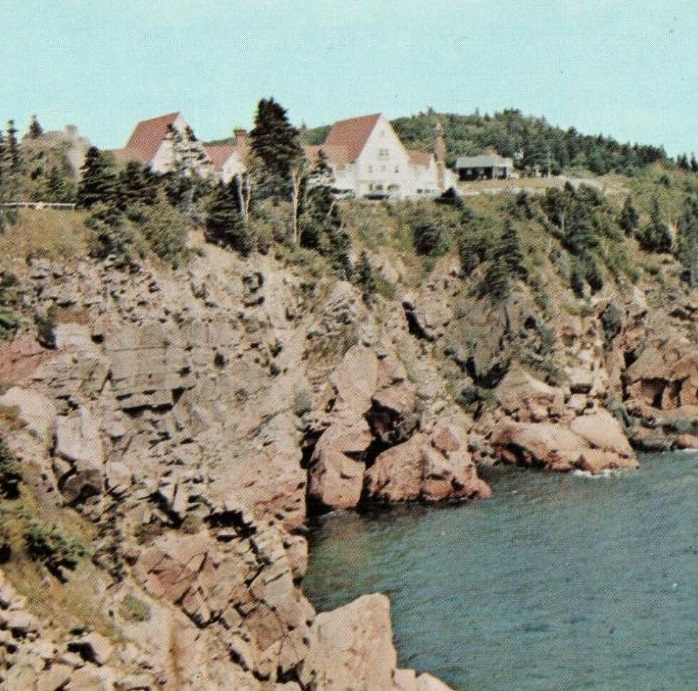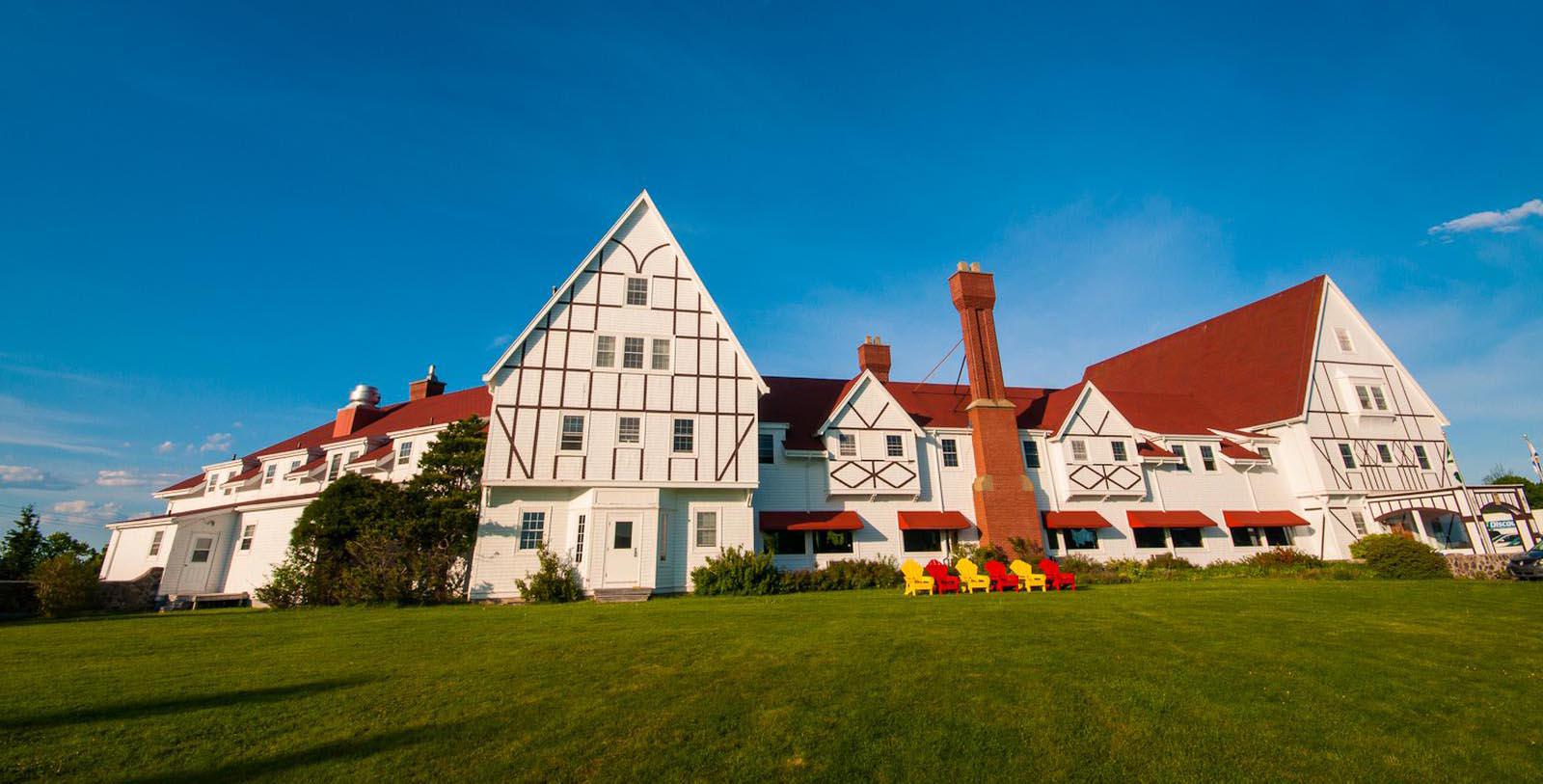Receive for Free - Discover & Explore eNewsletter monthly with advance notice of special offers, packages, and insider savings from 10% - 30% off Best Available Rates at selected hotels.
history
Discover the Keltic Lodge Resort and Spa, which was once the quaint seaside home of Henry and Julie Corson.
Keltic Lodge Resort and Spa, a member of Historic Hotels Worldwide since 2014, dates back to 1939.
VIEW TIMELINEA member of Historic Hotels Worldwide since 2014, the Keltic Lodge Resort and Spa is a luxurious destination that harkens back to the early 20th century. At the height of the Roaring Twenties, the provincial government of Cape Breton Island decided to connect the disparate fishing villages that lived in relative isolation throughout the region. Access through the area had been nearly impossible for generations, as most residents could only travel across the harrowing terrain on foot or horseback. Furthermore, metropolitan American and Canadian tourists had begun visiting on seasonal vacations, too, inspiring the local officials to make their trips across the island more easy. Work on their new road thus began in 1926, with the first end starting at the small hamlet of Cape North. Connecting to the nearby town of Cheticamp, it gradually traversed its way down the northeastern shoreline of Cape Breton Island before finally turning left and forming a loop inland. The construction lasted months, even as the Great Depression befell all Canada a few years later. But after many long days of hard work, the newly christened “Cabot Trail” debuted for the first time in 1932. Its introduction had a dramatic effect, enabling countless more families to head north and experience the majesty of the region. To further bolster the nascent tourism industry, the Nova Scotian politicians agreed to develop a gorgeous, state-run resort complex. They subsequently selected a coastal plot of land within the Cape Breton Highlands National Park, which was created in 1936. The parcel had specifically belonged to the Colson family, who had originally moved to the site upon the invitation of Alexander Graham Bell during the early 20th century.
In 1939, the provincial government commissioned the construction of the resort. The project proved to be a massive undertaking, requiring two full years to complete. Nevertheless, the architects in charge proceeded to craft a brilliant Tudor Revival-style edifice that offered spectacular views of both the national park and the Atlantic Ocean nearby. When the newly named “Keltic Lodge” made its triumphant debut during World War II, it immediately became one of the most celebrated retreats in Canada. Indeed, the resort featured nothing but the finest modern amenities, as well as a range of outstanding facilities. Keltic Lodge even offered the use of a brilliant 18-hole golf course that Stanley Thompson had built at the behest of Parks Canada around the same time. (Called the “Cape Breton Highlands Links,” it subsequently became an affiliate of the Keltic Lodge afterward.) Despite the immense popularity the resort enjoyed, wartime resource shortages eventually forced the compound to close until 1946. Thankfully, the Keltic Lodge recovered well and resumed its place as an elite holiday destination for many generations thereafter. Now known as the “Keltic Lodge Resort and Spa,” this fantastic historic resort continues to rank among Canada’s most exclusive vacation retreats. Thousands of guests from both Canada and abroad keep flocking to the location in great numbers, motivated by its serene setting, warm hospitality, and fascinating institutional history. The historic golf course has drawn particularly significant praise in recent years, with Sports Illustrated identifying the Cape Breton Highland Links hailing it as Thompson’s most influential design in 2002.
-
About the Location +
Located within the Canadian province of Nova Scotia, Cape Breton Island is one of the most fascinating places in Atlantic Canada. Its history harkens back millennia, with the first known inhabitants—the native Mi’kmaq and their ancestors—living on the island for generations. Hunter-gatherers who relied heavily upon the sea, they were eventually visited by European explorers beginning in the late 15th century. Italian mariner John Cabot was arguably the first to arrive at Cape Breton Island in 1497, although some historical evidence suggests that he may have visited Newfoundland further north. Nevertheless, the French eventually claimed Unama'ki—as the island was then known—and made it a part of its nascent North American empire during the 17th century. Over time, the region became an integral part of a colony known as “Acadia,” which covered a geographical region that extended all the way south to the present-day U.S. state of Maine. Cape Breton Island remained under French control well into the 18th century, even as the rest of Acadia was absorbed into the British Empire after the War of Spanish Succession. In the wake of the conflict, Cape Breton Island formed the nucleus of a new, albeit much smaller, French settlement known as “Île Royale.” To safeguard it, the French constructed a massive citadel along a bay set within the eastern part of the island known as the “Forteresse de Louisbourg” (Fortress of Louisbourg).
Regarded as one of the most imposing strongholds in the “New World,” it bore enough firepower to easily withstand a naval assault. But the fort’s placement on low-lying ground made it incredibly susceptible to land-based attacks—a weakness that the British exploited when they fought France again in the War of Austrian Succession. While the fortress was returned to France after the conflict, the British nonetheless kept it permanently following the Siege of Louisbourg during the Seven Years’ War. (The North American theater of that conflict is often remembered as the “French and Indian War.”) In fact, some 26,000 British regulars and American colonials had managed to take the site after a grueling two-month-long blockade in 1758. The defeat proved fatal to France’s control over Cape Breton Island, as the region was given to Great Britain once the war was over. The British then incorporated Île Royale into its colony Nova Scotia, although it did briefly form its own independent administrative unit known as “Cape Breton Island.” The area became a haven for Scottish immigrants, as well as loyalist refugees once the American Revolutionary War had ended. Together with the remaining French Acadians, the British settlers formed a unique cultural identity that persisted for many years. Farming and fishing then emerged as the focal point of life on Cape Breton Island, yet mining did briefly become popular for a time in the 1830s.
However, travelers from other parts of Canada soon discovered the area’s inherent beauty, giving birth to yet another prosperous industry—tourism. Aware of this new development, local politicians began to cultivate its growth with infrastructural projects like the historic Cabot Trail at the start of the 20th century. Their work subsequently laid the foundation of Cape Breton Island’s current tourism trade, which remains incredibly strong today. Indeed, the region has been replete with many outstanding attractions that have enchanted countless cultural heritage travelers, such as the Fortress of Louisbourg National Historic Site, the Alexander Graham Bell National Historic Site, Bras d’Or Lake, and, of course, the Cabot Trail. Perhaps the most significant destination on Cape Breton Island is the renowned Cape Breton Highlands National Park, opened as Atlantic Canada’s first national park in 1936. Nestled within a section of Cape Breton Island known as the “Cape Breton Highlands,” this majestic natural wonder extends for 366 square miles. The park includes many species of plants and animals that are unique to Acadian, Taiga, and Boreal habitats. In fact, it is very possible to see wild moose, grouse, marten, and even the endangered Canadian lynx within the park. Visitors can also participate in numerous activities while visiting Cape Breton Highlands National Park, including hiking, cycling, and fishing. (A portion of the Cabot Trail cuts through a portion of the park as well, making it easy to go sightseeing.)
-
About the Architecture +
When the Nova Scotian government began developing the Keltic Lodge Resort and Spa nearly a century ago, it used Tudor Revival-style architecture as the source of his inspiration. Tudor Revival architecture is best defined as an eclectic mixture of late medieval building traditions that influenced the appearance of English villages during the Middle Ages. The form specifically attempted to emulate the historical character of the feudal cottage that once dominated England’s landscape. The name “Tudor” is somewhat of a misnomer though, for the design aesthetic does not borrow any of its principles from buildings constructed during the reign of the 16th century Tudor monarchs. Tudor Revival style first became prevalent in the United Kingdom at the beginning of the 20th century, when architects were exploring alternative ways to connect better with the past. Tudor Revival was specifically applied to residential homes, although some commercial structures—like hotels—also bore the unique appearance. It then jumped across the Atlantic to North America, where it quickly ranked among the most popular architectural styles.
Buildings constructed with Tudor Revival-style architecture were typically identified by their half-timbering. In essence, “half-timbering” is the practice of constructing a series of interlocking load-bearing timber frames that were then filled with some kind of plaster mold. As such, the architects left the frame exposed, creating a visibly distinctive appearance. Another common characteristic of Tudor Revival-themed buildings was the presence of a steeply pitched roof that usually featured heavy shingles. This area of the structure was often lined with overhanging gables, as well as eaves and diamond-shaped casement windows. In many cases, the architects endeavored to make the roof appear as if it had been thatched. Stone chimneys also protruded from the roof, conveying rich details. A wonderful, round arched doorway guided guests into the interior, too, which featured an irregular floor plan. The use of such a layout was normal inside late medieval English homes, as it usually took several generations to build. Modern architects hence attempted to capture that ambiance whenever they set about creating the blueprints for Tudor Revival-style buildings.




























